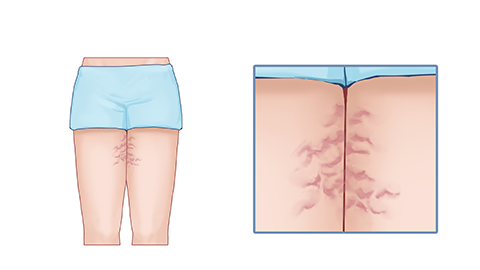How can surgical scars be removed?
Generally, surgical scars may be related to factors such as skin tension, scar-prone constitution, foreign bodies entering the wound, the angle of the surgical incision relative to the skin, and residual foreign bodies. These can be managed through laser therapy, massage, maintaining wound cleanliness, and medication use. It is recommended to visit a hospital promptly for examination and to receive appropriate treatment under a physician's guidance. The analysis is as follows:

1. Skin Tension
The external tension caused by the degree of skin tissue defect and the inherent tension of the skin tissue itself can affect scar formation. Areas with high tension and frequent movement are prone to hypertrophic scars, such as the chin, anterior sternum, deltoid, upper back, elbow, hip, knee, ankle joint, and dorsum of the foot. Treatments such as laser therapy, microneedling, and chemical peels can promote skin regeneration and improve scar appearance.
2. Scar-Prone Constitution
Certain individuals possess a scar-prone constitution, in whom even minor wounds can easily lead to noticeable scars. During wound healing, abnormal collagen synthesis occurs in these individuals, resulting in excessive scar tissue proliferation. After wound healing, raised and hardened scars may form. Physical treatments such as silicone sheet application, massage, and pressure therapy can be attempted to promote blood circulation and reduce scar tissue proliferation.
3. Improper Postoperative Care
Inadequate postoperative care may affect the wound healing process, leading to abnormal growth factor expression and collagen deposition, which can further exacerbate scar formation. After surgery, it is recommended to keep the incision clean and dry, change dressings regularly, and promote healing.
4. The Angle of the Surgical Incision Relative to the Skin
An incision made perpendicular to the skin surface will result in the finest scar after healing. The greater the inclination angle, the wider the dermal scar becomes, and the more noticeable the skin deformity will be. Under a physician's guidance, topical application of medications such as asiaticoside cream, heparin sodium cream, or vitamin E cream may be used to soften the scar tissue.
5. Residual Foreign Bodies
Foreign bodies remaining in the wound after surgery, such as sutures or debris, can also promote scar formation. These are often accompanied by delayed wound healing, localized hard nodules, and discomfort. Patients may require a secondary surgical procedure to remove the foreign bodies and promote wound healing.
During the recovery period, consumption of spicy, irritating foods and seafood—considered potential triggers—should be avoided to prevent interference with scar repair.






